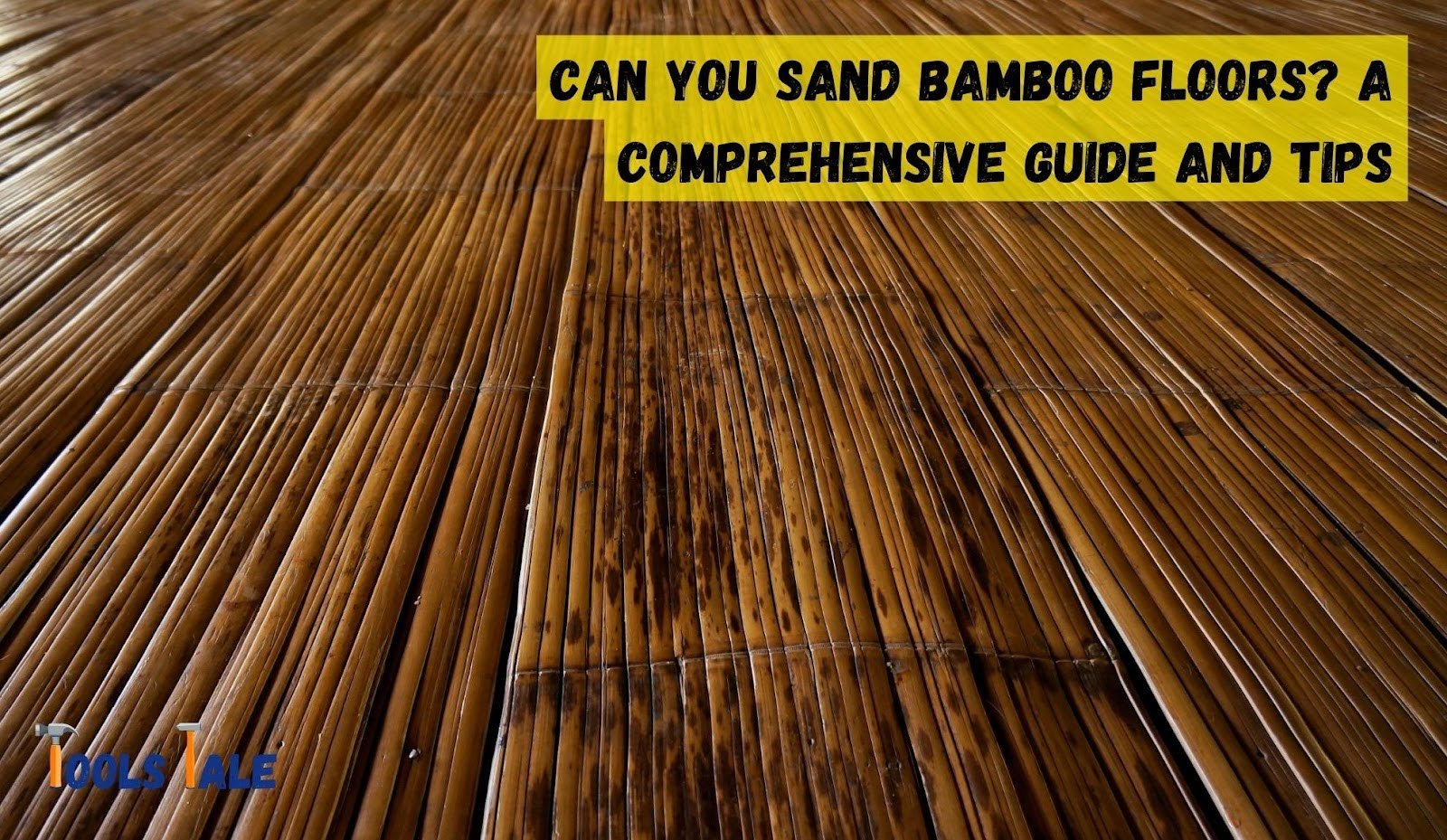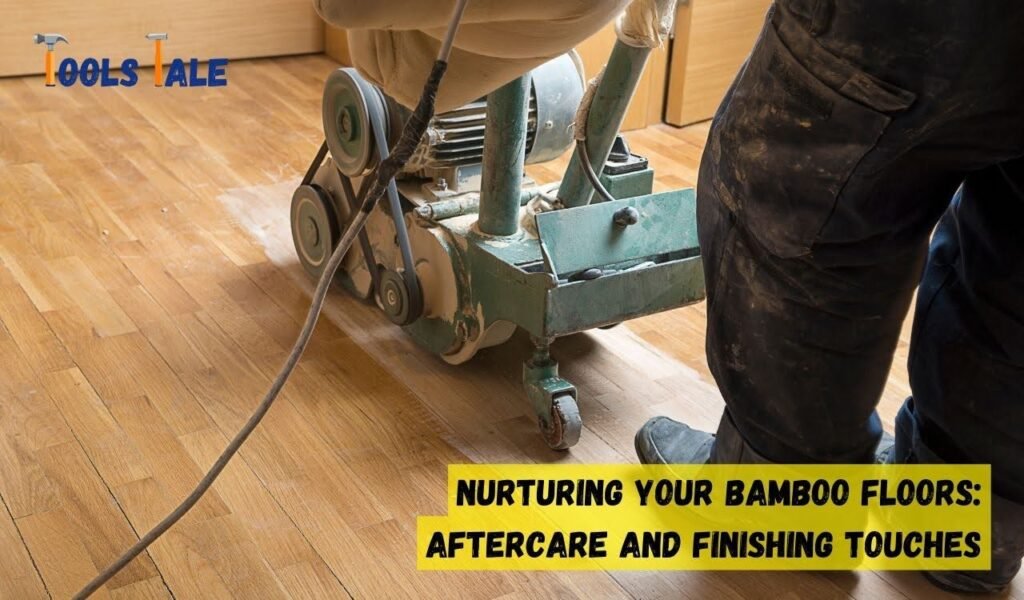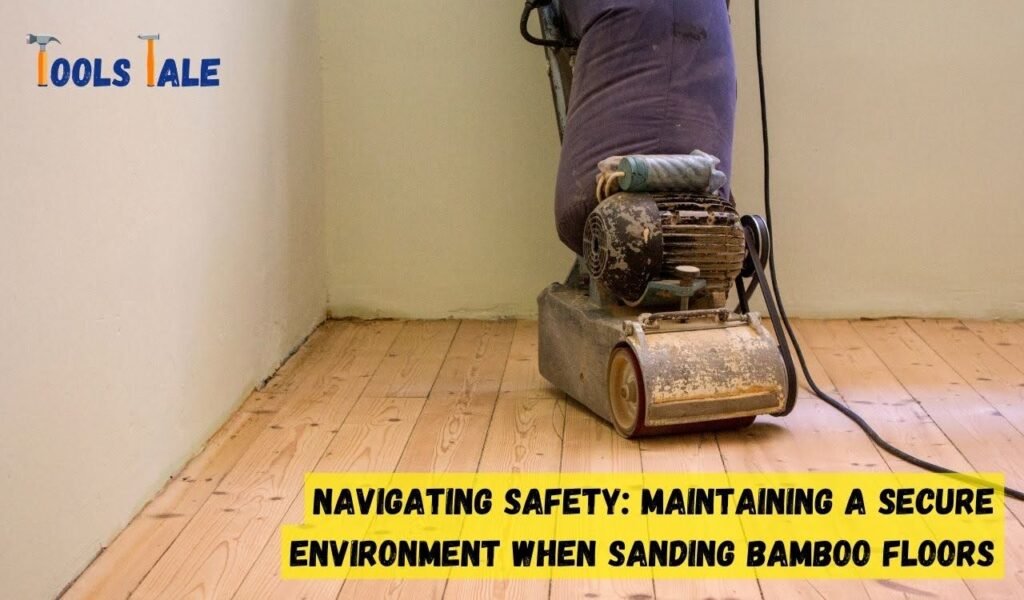Physical Address
304 North Cardinal St.
Dorchester Center, MA 02124
Physical Address
304 North Cardinal St.
Dorchester Center, MA 02124

Can you sand bamboo floors? Wondering if your bamboo floors can get a fresh makeover? Well, the answer is right here, and it’s not a simple yes or no. Sanding bamboo floors can breathe new life into your space, but it’s a bit of an art. Before you dive into the DIY world of floor makeovers, let’s unravel the secrets together.
Whether you’re dealing with scratches, wear, or just craving a new look, this guide spills the bamboo-sanding beans. Get ready for a quick ride into the world of bamboo floor rejuvenation – your floors will thank you later!
Key Summary: Can You Sand Bamboo Floors?
Sanding bamboo floors involves using fine-grit sandpaper, typically starting with 120 grit and progressing to 220 grit for a smooth finish. The sanding time depends on the floor’s condition. Prioritize safety with protective gear such as a mask and eye protection during the sanding process.
Bamboo floors, known for their durability and eco-friendliness, often prompt the question: Can you sand bamboo floors? The answer is a qualified yes.
Bamboo floors can be sanded, but several factors must be considered. First, assess the type of bamboo flooring you have. Solid bamboo flooring typically allows for sanding, while engineered bamboo may have a thinner wear layer, limiting the number of times it can be sanded.
Before proceeding, evaluate the condition of the bamboo. Sanding is suitable for addressing surface scratches, dents, and wear. If the damage is extensive or the bamboo is too thin, sanding may not be the best option.
When sanding bamboo floors, use appropriate grit sandpaper and techniques to avoid over-sanding, ensuring you preserve the floor’s integrity. It’s crucial to follow manufacturer recommendations, as improper sanding may void warranties.
Additionally, after sanding, consider refinishing the bamboo floors to protect them and enhance their appearance. Choosing a finish designed for bamboo flooring ensures optimal results.
Sanding bamboo floors is possible, but it requires careful consideration of the flooring type, condition, and proper technique. When done correctly, sanding can revitalize bamboo floors, providing a renewed and polished look to your sustainable and resilient flooring investment.
Bamboo floors, renowned for their eco-friendly attributes and durability, may require sanding over time to revitalize their appearance and address wear and tear. Sanding bamboo floors can be a rewarding DIY project when approached with careful consideration and the right techniques. Here’s a comprehensive step-by-step guide to help you navigate the process:
Before embarking on the sanding journey, assess the condition of your bamboo floors. Identify scratches, dents, or areas with wear. Ensure the bamboo is thick enough to withstand sanding, especially in the case of solid bamboo flooring.
Prepare the bamboo floor by cleaning it thoroughly. Remove dust, dirt, and debris, ensuring a clean surface for the sanding process.
Protect the rest of your home from dust generated during sanding.
This is the core of the project. Use a systematic approach to achieve even results.
Sanding leaves the bamboo exposed and vulnerable. Refinishing protects and enhances the bamboo’s appearance.
Maintain your newly sanded and refinished bamboo floors for long-lasting beauty.
By following these detailed steps, you can successfully sand your bamboo floors, restoring their natural beauty and prolonging their lifespan. Always adhere to safety precautions and manufacturer guidelines for the best results.

After successfully sanding your bamboo floors, the journey doesn’t end there. Proper aftercare and finishing touches are crucial to maintain the newfound beauty and longevity of your floors.
After sanding and refinishing, conduct a thorough inspection of your bamboo floors. Look for any missed spots, imperfections, or areas that might require additional attention. Addressing these issues promptly ensures a seamless and polished result.
Be mindful of how you arrange furniture on your freshly sanded bamboo floors. Use furniture pads under heavy pieces to prevent scratches and dents. Lift furniture when moving it rather than dragging it across the floor to avoid any potential damage.
Implementing a regular cleaning routine is key to preserving the beauty of your bamboo floors. Sweep or vacuum regularly to remove dust and dirt. Damp mop with a bamboo-friendly cleaner to keep the surface clean without introducing excessive moisture.
Bamboo is sensitive to moisture, so it’s essential to avoid excessive water exposure. Wipe up spills promptly and refrain from using a wet mop. Excessive moisture can lead to warping or other damage, impacting the longevity of your bamboo floors.
Consider periodic maintenance to keep your bamboo floors in top condition. This may include applying a fresh coat of finish every few years to protect against wear and tear. Follow the manufacturer’s recommendations for maintenance intervals and products.
Strategically placing area rugs and mats in high-traffic areas can provide an extra layer of protection for your bamboo floors. Choose rugs with a non-slip backing to prevent scratches and ensure they are easy to clean to avoid trapping debris underneath.
Bamboo floors, like any natural material, can be affected by sunlight. Over time, prolonged exposure to direct sunlight may cause fading or discoloration. Use curtains or blinds to control sunlight exposure and preserve the vibrancy of your bamboo floors.
Stay informed about new cleaning products or techniques that may emerge in bamboo floor care. As technology advances, there may be innovations that can enhance the maintenance and preservation of your floors.
By incorporating these aftercare practices and finishing touches into your routine, you’ll not only protect your investment but also ensure that your bamboo floors continue to showcase their natural elegance for years to come. Remember, a little care goes a long way in maintaining the timeless beauty of your sanded and refinished bamboo floors.
Sanding bamboo floors is a transformative process that can breathe new life into your living space, but like any home improvement project, it comes with both advantages and disadvantages. Understanding these factors is crucial before embarking on the journey of floor rejuvenation.
Sanding bamboo floors is a valuable undertaking with the potential to rejuvenate your living space. While the advantages include a refreshed appearance, increased lifespan, customization options, cost-effective maintenance, and improved indoor air quality, it’s important to weigh these against potential disadvantages such as limited sanding opportunities, the need for professional skills, the risk of damage, dust generation, and the time-consuming nature of the process.
Before deciding to sand your bamboo floors, carefully evaluate the current condition of your flooring, your skill level, and whether the benefits outweigh the potential drawbacks. When executed with care and consideration, sanding can be a rewarding experience that enhances both the aesthetics and functionality of your bamboo floors.

Sanding bamboo floors is a transformative process that requires attention to safety measures to ensure a smooth and hazard-free experience. Prioritizing safety during this essential step in floor restoration is crucial. Let’s explore key safety considerations to keep in mind when sanding bamboo floors.
When sanding bamboo floors, always wear the appropriate Personal Protective Equipment (PPE) to safeguard yourself from potential hazards. Essential PPE includes safety goggles to protect your eyes from dust and debris, a mask to prevent inhalation of airborne particles, and ear protection to reduce the impact of loud sanding equipment.
Dust containment is paramount to maintaining a safe environment during sanding. Implement effective measures to contain dust and prevent its dispersion throughout your home. Seal off the work area with plastic sheeting to confine dust, and consider using a dust containment system attached to the sander to capture airborne particles at the source.
Ensure proper ventilation in the sanding area to disperse dust and fumes. Open windows and doors to facilitate airflow, and use fans strategically to direct contaminants out of the space. Adequate ventilation not only enhances safety but also contributes to a healthier indoor environment during and after the sanding process.
Before initiating sanding, thoroughly inspect the sanding equipment to ensure it is in optimal working condition. Check cords, plugs, and connections for any signs of wear or damage. Malfunctioning equipment poses safety risks, so address any issues promptly and avoid using damaged tools.
Conduct a detailed assessment of the bamboo floor before sanding. Identify and repair any loose or damaged floorboards to create a stable and secure surface. This proactive approach reduces the risk of accidents during the sanding process and contributes to overall safety.
Maintain proper sanding techniques and ergonomic postures to minimize the risk of strains or injuries. Ensure the sander is guided smoothly across the floor, avoiding sudden movements. Adopt comfortable and balanced postures to prevent physical fatigue, and take regular breaks to alleviate stress on the body.
Be prepared for unforeseen circumstances by having a well-equipped first aid kit readily available. Familiarize yourself with the location of emergency exits and fire extinguishers. Inform others in your household about the ongoing sanding work, and establish a communication plan in case of emergencies.
After sanding, conduct a thorough cleanup of dust and debris. Use a vacuum equipped with a HEPA filter to effectively remove fine particles. Dispose of used sandpaper, dust bags, and other waste materials properly, following local regulations for waste disposal and recycling.
Plan your sanding activities with a focus on time management. Pacing the work and taking breaks helps prevent fatigue, reducing the likelihood of accidents due to decreased concentration. Avoid rushing the sanding process, as this can compromise both the quality of the work and safety.
Take protective measures for areas surrounding the sanding site. Cover adjacent rooms and furniture with plastic sheeting to prevent dust infiltration. This precautionary step ensures that the impact of sanding is contained to the specific work area.
Safety is paramount when sanding bamboo floors. By incorporating these safety considerations into your sanding process, you create a secure environment that minimizes risks and enhances the overall success of your floor restoration project. From personal protective equipment and dust containment to proper equipment inspection and emergency preparedness a focus on safety ensures that sanding your bamboo floors is not only effective but also a safe and satisfying endeavor.
When considering the restoration of bamboo floors, sanding is a common method, but it’s not always the only solution. Alternatives exist that can achieve remarkable results without the extensive sanding process. Let’s explore these alternatives and discover when they might be the right choice for rejuvenating your bamboo floors.
While sanding is a powerful method for restoring bamboo floors, these alternatives provide diverse options depending on the extent of wear, personal preferences, and budget constraints. Deep cleaning, restoration kits, spot repairs, buffing, strategic placement, and oil-based treatments offer flexibility and cater to specific needs, allowing you to achieve a refreshed and rejuvenated look for your bamboo floors without the extensive process of sanding. Carefully assess the condition of your floors and choose the alternative that aligns with your restoration goals.
In the realm of bamboo floor restoration, the question “Can you sand bamboo floors?” opens a doorway to transformation. Whether opting for the classic sanding approach or exploring alternatives, the key lies in understanding your bamboo’s unique needs.
Embrace the opportunity to breathe new life into your floors, considering factors like wear, expertise, and sustainability. With careful consideration and the right approach, your bamboo floors can be a canvas for renewal, reflecting timeless beauty and enduring quality.
To restore bamboo floors without sanding, deep cleaning and refinishing are effective alternatives. Use bamboo-friendly cleaning solutions, followed by a suitable finish to rejuvenate the floor’s appearance without the need for sanding.
The best finish for bamboo floors is often a water-based polyurethane finish. It provides durability, dries faster, and emits fewer fumes compared to oil-based finishes, ensuring a long-lasting and eco-friendly solution.
No, the process of sanding bamboo floors inherently involves sanding. Sanding is essential for removing scratches, dents, and wear, creating a smooth surface for refinishing. However, alternative methods can achieve a refreshed look without extensive sanding.
Yes, sanding bamboo floors is typically done before refinishing. Sanding removes imperfections, creating a clean surface for the application of a new finish. It is a crucial step in the restoration process, enhancing the overall appearance of bamboo floors.
Yes, bamboo floors can be sanded and refinished to revitalize their appearance. However, it’s essential to consider the thickness of the bamboo wear layer, as excessive sanding may compromise the structural integrity. Follow manufacturer guidelines for optimal results.
Yes, bamboo floors can be sanded, but it requires careful consideration. Assess the type of bamboo flooring, the extent of wear, and follow recommended sanding techniques. Proper sanding can breathe new life into bamboo floors, enhancing their longevity and aesthetic appeal.